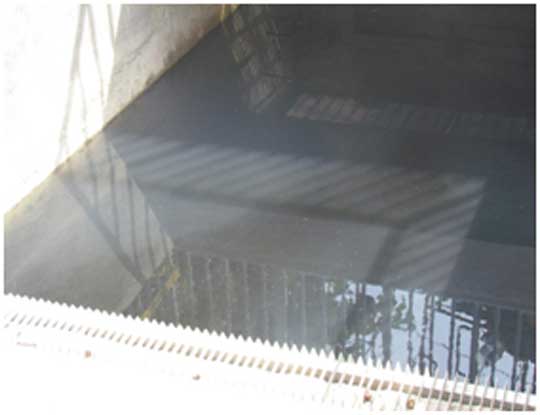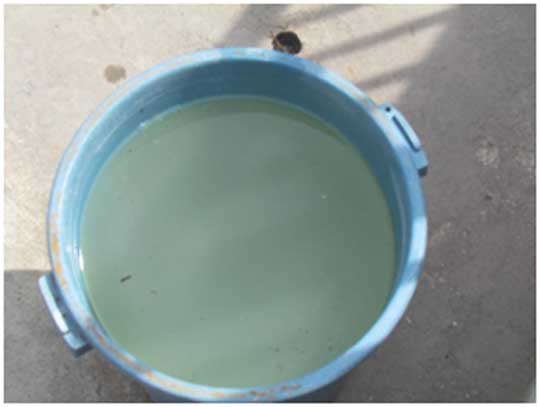The Department of Science and Technology (DOST) resolved to respond to the country's pressing problem on poverty alleviation through a technology-based holistic approach -from providing sustainable livelihood, provision of the basic need for potable water and creating a sound and healthy environment. On the whole, this approach advocates the need for science and technology interventions as the only way to go for a better quality of life.
Zeroing in on initiatives for a healthy environment, the newly-developed portable eco-friendly septic system enhanced with organominerals (OM) for disaster areas as part of rehabilitation activities has also found application in condominiums, other housing projects and now in hotels and areas where wastewater treatment is a problem.
Boracay Island is one of these areas that has long been the subject of issues regarding wastewater, drainage systems, and residual solid waste that fill the air with noxious odor. While there are regulations governing waste treatment in the island, the problem persists due to inadequate treatment system especially that the island continues to be visited by tourists and locals.
The Eco-Sep is a self-sustaining and portable/movable wastewater treatment system that uses an innovative combination of bio-stimulation and filtration. It is a low-cost and deployable method for immediate installation of domestic wastewater clean-up especially in disaster-affected areas anywhere in the country. Being enhanced with organominerals (OM) makes the Eco-Sep appropriate in disaster-stricken areas.
Initially, Tacloban was the chosen demonstration area for the Eco-Sep following the disastrous effects of typhoon Yolanda and Rubie. Three Eco-Sep Systems were installed for 522 residents in temporary shelters in Palo, Leyte with 61 latrines and 30 bathing cubicles. Remediation using organominerals was conducted using varying concentrations of OM to determine the optimum retention time and treatment dosage based on parameters like coliform count, BOD (Biological Oxygen Demand), VOC (Volatile Organic Compound) and COD (Chemical Oxygen Demand). The Eco-Sep system significantly reduced the parameters after the 14-day remediation using the organomineral.
With the significant results, Mayor Remedios Petilla of Palo Leyte recommended that the Eco-Sep be incorporated in the engineering design for the rehabilitation projects in Leyte.
Inspired by these results, the DOST stepped up its efforts to help Boracay Island with its domestic wastewater problem by using the organomineral treatment used in the Eco-Sep system.
The DOST Team composed of the Project Leader, Dr. Merlinda Palencia of Adamson University and PCIEERD, namely, Ms. Ninaliza Escorial, Ms. Laarni Piloton and Ms. Candy Ilaw together with the MENRO and LGU of Boracay applied the OM treatment in selected Materials Recovery Facilities (MRF) and some hotels within the beach area.
For the past two weeks, the team had been checking on the number and volume of septic tanks in the selected hotels for the computation of the dosage for the treatment. Collection of raw wastewater sample was also done as baseline data.
In the two MRFs in Balabag and Manoc-Manoc, spraying of OM was conducted to reduce odor due heavy loads of garbage in the areas. Spraying was concentrated in biodegradable and some residuals that produce bad odor. It was reported that a total of 7 trucks of residual garbage/waste is generated in Brgy. Balabag alone.
Like in Palo, Leyte, initial results on the use of the Eco-Sep system with organominerals showed significant reduction of odor both in the selected hotels and especially in the MRFs where results were almost experienced instantly.
In one of the hotels that agreed for the testing, it was reported that the hotel spends about Php 20,000.00 on commercially available chemical spray for the odor and found the OM technology as a cheaper yet low-cost effective substitute.
In the jar test conducted by Dr. Palencia in a pumping station in Boracay, the caretaker reported that the smell of the wastewater isolated for jar test effectively removed the bad odor and also color change after application of the organomineral. Below is the picture of black wastewater in raw (left) and treated (right) using jar test. With the good results of the jar test, the organominerals was used on-site which resulted to a cleaner wastewater (below photo) compared to the raw wastewater.
Raw wastewater

Jar test treatment

Organomineral treated wastewater

During the meeting of the PCIEERD Monitoring team and Dr. Palencia with LGU Technical Operations Officer, Mr Glen Sacapano and MENRO Senior Specialist, Engr. Tresha Lozanes, Mr. Sacapano said that the LGU is interested in applying the technology in the Island to address the septic wastewater problem. There is positive feedback on the results where significant reduction of odor upon application of the OM in MRFs was experienced. He suggested to Dr. Palencia to submit a proposal and policy recommendations on the management of septic wastewater using the developed technology. He added that the Eco-Sep technology will be used for the development of their industries. (Maria Elena A. Talingdan, DOST-PCIEERD)




